Geography
❂
Explore
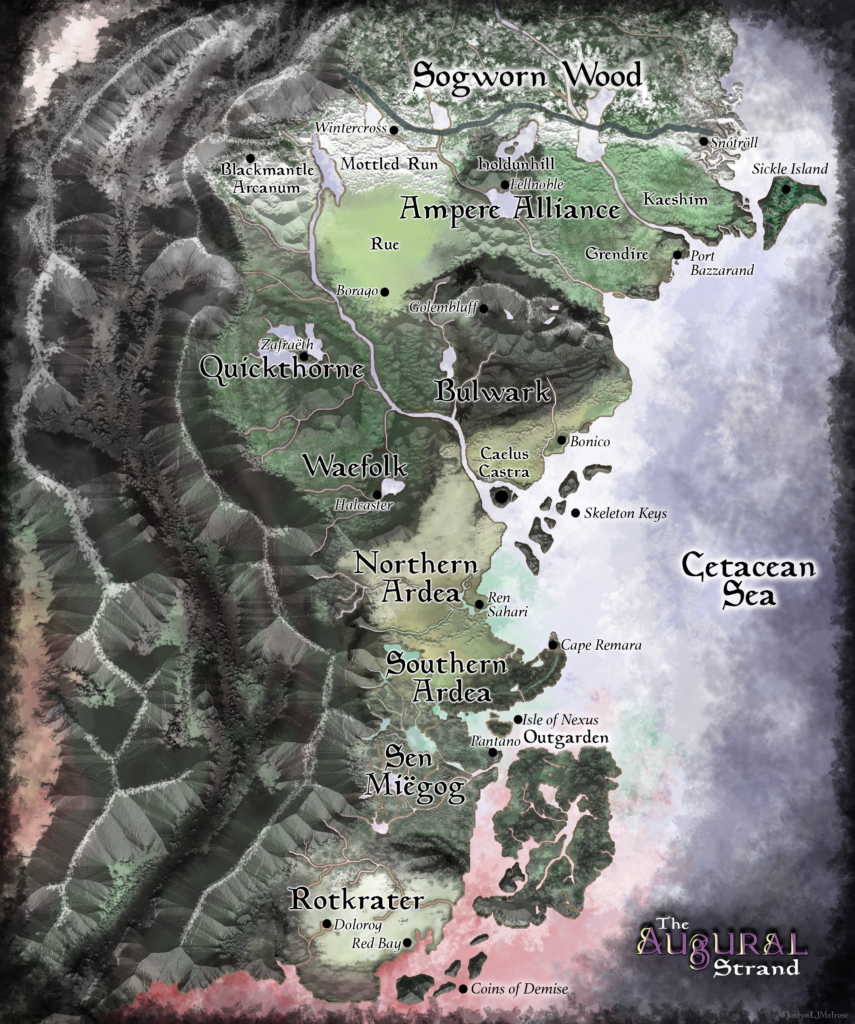
🔎: On Desktop, hover over the map to zoom in.
The Augural Strand rests on the eastern coast of the continent Ártios (ARR-tee-ohs) in the world of Caebor (KAY-bor).
To the east of the Augural Strand lies the Cetacean Sea (suh-TAY-shun sea). Even if one could survive the perilous journey across those merciless waters, there are no docks or shores left beyond our own.
To the west, the mountainous chasm known as the Mountain Barrows, the scar that marked the end of the Cataclysm. It is a place of desolation, though bandits and beasts alike have found it amenable for their unsavory purposes.
Beyond the Sogworn Wall to the north, hungering horrors and bitter cold.
It is for these reasons that we call the Augural Strand our home, it is a safe haven for all in an unforgiving world. Our region is made up of eight nations, each governing itself and abiding by its own laws. The group, however, is held together by the Accords of Augur, a pledge to never again let the Strand fall into chaos.
About the Regions
Ampere Alliance
The Nation of Lights
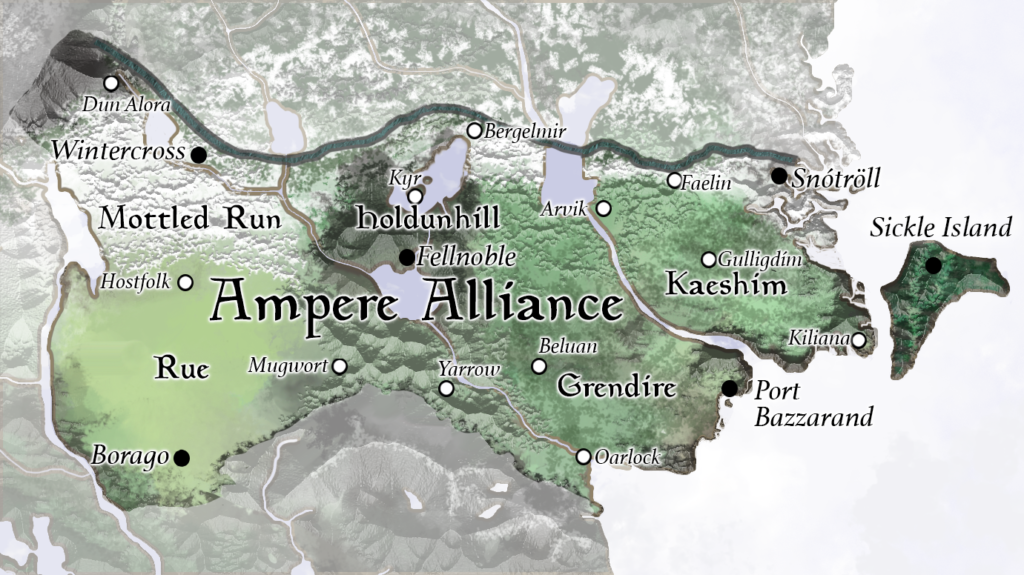
From the sputtering harvesters of Mugwort to the neon signs of Fellnoble, magic and machinery define life across the five provinces of the Ampere Alliance.
The provinces have little in common, but it is those very differences that make their allegiance necessary. None would be able to stand alone without the artifice from Holdunhill, the shipping ports of Grendire, the oil from Mottled Run, the precious metals from Kaeshim and the produce from Rue.
The nation is famous for the winding Sogworn Wall that separates the Alliance from the dangerous, icy woods to the north.
Provinces
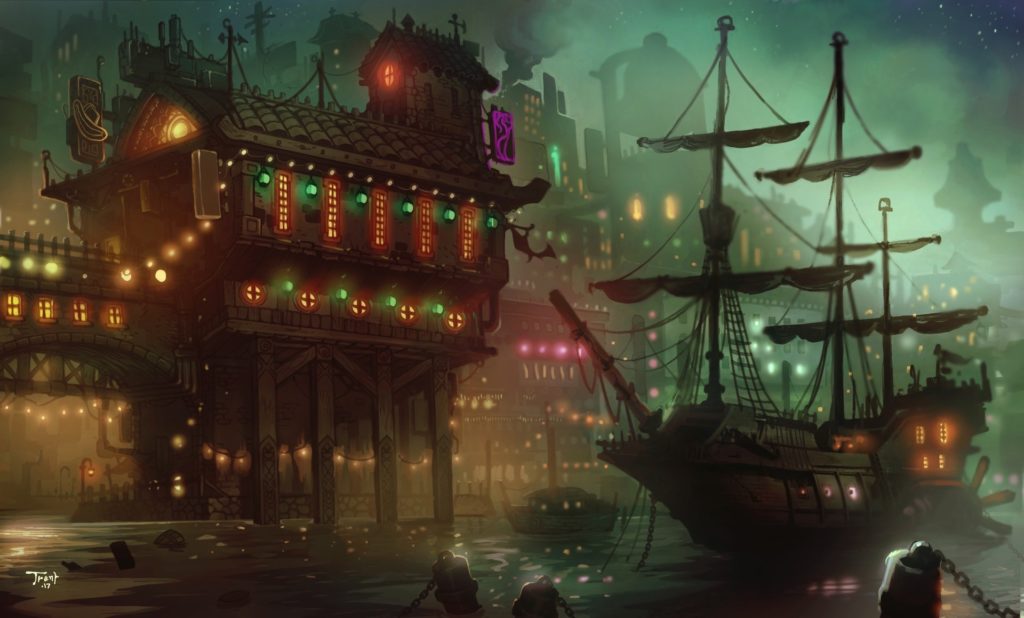
Grendire
From Port Bazzarand, ships depart daily to nearly every coastal city in the Augural Strand. The city is a hub of constant motion—crates, cranes, and cargo move in endless cycles across sprawling docks and towering warehouses. Many arrive in search of work, drawn by the promise of steady pay in shipping, manufacturing, or logistics. Gnomes, Goblins, and Humans have shaped much of the city’s workforce, giving it a fast-paced, no-nonsense character built on efficiency and grit.
But to the south lies a quieter soul: the town of Oarlock, often called the cultural heart of the province. Home to Esoteria College, Oarlock is a riverside haven of scholars, artists, and free thinkers. Cobblestone streets wind past cafés, galleries, and bookstores, and the town regularly hosts festivals celebrating literature, music, and arcane philosophy. Where Port Bazzarand moves to the rhythm of industry, Oarlock moves to the rhythm of ideas.
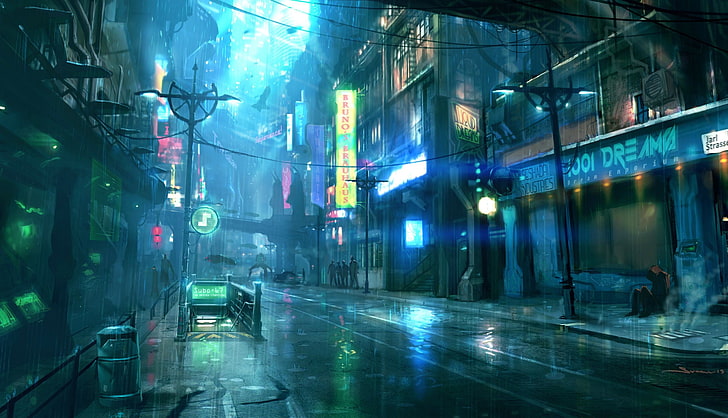
Holdunhill
Fellnoble is a city of towering steel spires and flickering arcane billboards, where the hum of enchanted alchemical engines and the glow of neon sigils never truly sleep. As the capital of Holdunhill and the seat of power for the Ampere Alliance, the dense city pulses with power, both magical and industrial.
At the city’s core stands Runeiverse, the arcano-tech giant that pulled the Ampere Alliance into the future. Fellnoble now serves as a showcase for the company’s innovation, with much of its infrastructure and daily life shaped by Runeiverse’s designs. While no other city rivals Fellnoble’s technological advancement, Runeiverse’s magical communication devices—known as Runes—have spread across the region. Other technologies have followed, though their adoption has been slower outside of Fellnoble. Still, no nation embraces arcane industry quite like Ampere.
In sharp contrast to Fellnoble, Kyr is a Lizardfolk town set on a forested island in Lake Amsvartnir to the north. Rebuilt after the Cataclysm by the Firstfolk, the town was constructed using traditional methods said to predate the earliest conquests of Ártios. Kyr follows the Old Ways, a set of ancestral laws and customs that guide its people. The Ampere guard rarely intervene, leaving the island largely to govern itself.
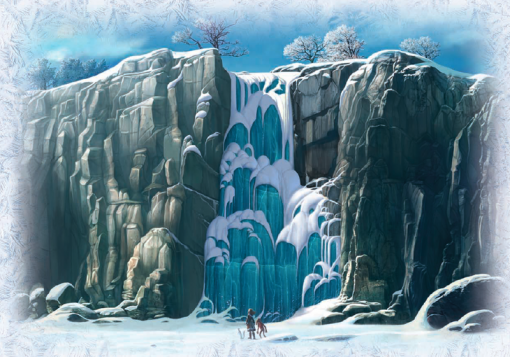
Kaeshim
Known as the Eastern Gate, Snótröll is one of the most storied settlements along the Sogworn Wall, though few outside the military have ever seen it. The fortress city is carved directly into the fjords, concealed behind a towering frozen waterfall that serves as both shield and sentinel. It’s believed to be the largest military installation in the Augural Strand—a place built for defense, not diplomacy.
Off the coast, the densely wooded Sickle Island rises from the waters. From the ground, it may appear pristine, untouched by civilization, but high in the canopy, intricate treetop villages reveal themselves. The Elves and Owlin who live there rarely consider themselves part of the Ampere Alliance and often reject the development and artifice of the mainland.
While the island’s inhabitants may prefer isolation, travelers can still reach this quiet oasis by charter boat from Kiliana. A seaside village and Lizardfolk refuge, Kiliana serves as the gateway to Sickle Island. Its docks are weathered by salt and time, but its people are well-attuned to the rhythms of the frigid shore.
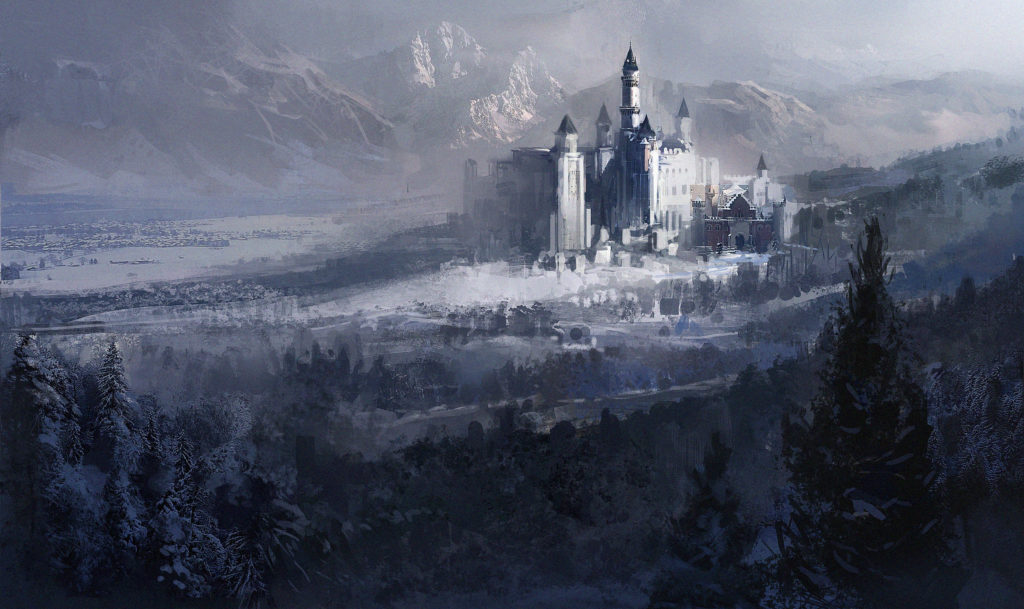
Mottled Run
Glassy frost clings to the open plains, forming and refreezing in uneven patterns as frigid winds sweep through the region. The land is harsh and desolate—ill-suited for farming, industry or easy living. Most who remain are tied to the defense of the Sogworn Wall, guarding against whatever stirs in the icy wilds beyond.
At the western end of the wall stands Dun Alora, a fortified encampment known as the Western Gate, marking the final stretch before the ramparts vanish into the Mountain Barrows. The outpost is grim and functional, a place where vigilance outweighs comfort.
A short distance away, nestled in the icy flatlands, sits the city of Wintercross. Life there is difficult—long winters, unpredictable storms, and a sense of isolation weigh heavily on its residents. The city is home primarily to the families of soldiers and support staff stationed along the wall. Yet, despite the hardship, Wintercross is famous for one rare beauty: the aurora. On clear nights, the sky above the frozen plains erupts in color, casting a strange, solemn light over the rooftops. For many, it’s a reminder that even at the edge of the known world, wonder still lingers.
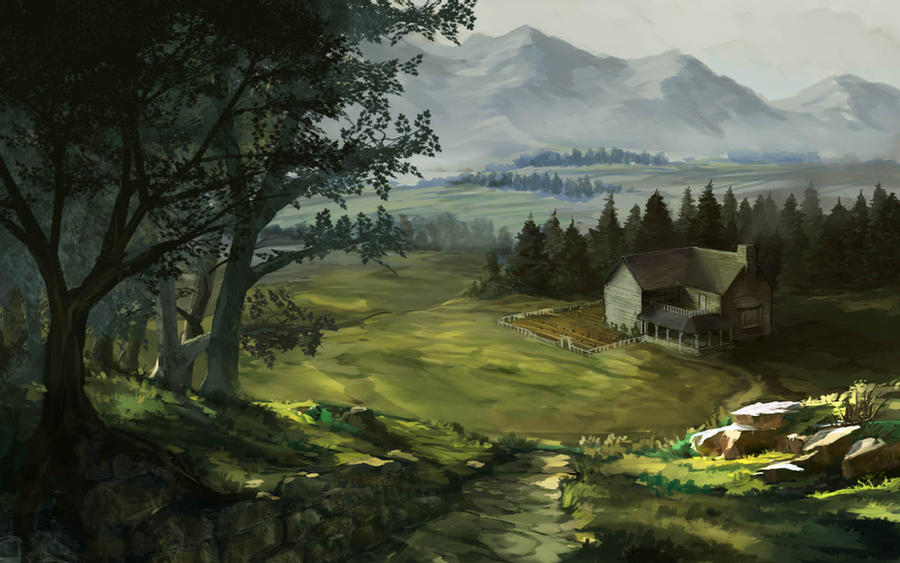
Rue
Between the scattered communities of Rue, vast stretches of farmland roll out in every direction. Outsiders are a rare sight, and most locals—Humans, Halflings, and Gnomes—prefer it that way. Quiet and hardworking, they provide the bulk of the Ampere Alliance’s produce, their lives shaped by the rhythm of planting and harvest.
At the province’s center stands Borago, a modest city by most standards, but the wealth concentrated there tells a different story. Home to Rue’s richest landowners, Borago serves as the region’s primary trading post, connecting the farmlands of Ampere and Bulwark to the markets beyond.
Blackmantle Arcanum
The Great Academy
Students of the mystical and military arts flock to the Nine Colleges located across the Augural Strand, but only those with extraordinary potential are welcomed into the Blackmantle Arcanum.
Founded by the greatest heroes the region has ever known, the Blackmantle Arcanum and the Nine Colleges were created to guide future heroes toward their destinies.
Several hundred years ago, the hero Caelus and the nine champions, known as the Blackmantle Magi, fought back against the Ironvein.
In the Last Battle, Caelus struck the titan with a powerful swing of his sword, creating the rift now known as the Mountain Barrows. As the dust settled, all that remained was the legendary Sword of Caelus.
In memory of Caelus, the Blackmantle Magi established the Arcanum in the newly-formed mountains and each Magus created a college of their own in their homeland.
The Sword of Caelus now rests in a tomb in the Arcanum, only to be wielded by the Archmagus in times of great calamity. This sacrifice inspired each of the Blackmantle Magi to follow his lead. As the bodies of each of the original Blackmantle Magi gave way, they transferred their souls to weapons. Each relic was entrusted to the headmaster of their namesake college so that they may continue to offer wisdom for all eternity.
Bulwark
The Kingdoms of the Ettin Mountains
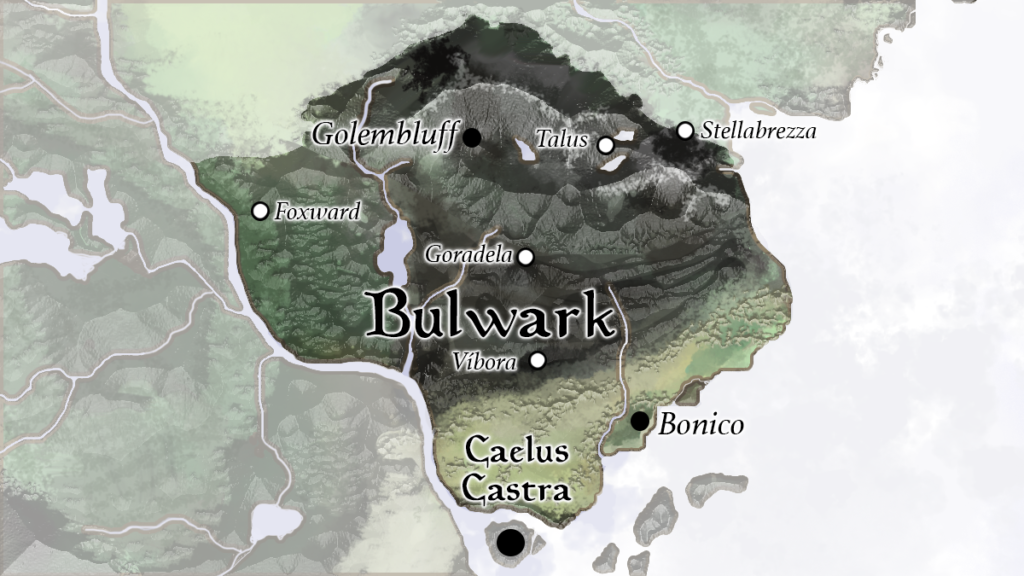
While few have met the king of Bulwark, his ironhanded grip can be felt far beyond the cavernous, hallowed halls of Golembluff.
After the Cataclysm, seven families formed kingdoms of their own around the Ettin Mountains. The families ruled their kingdoms in relative peace until King Adelstone of House Ettinborne, ruler of Ettinmont, mounted a campaign of conquest to unify the Seven Kingdoms. After Ettinborne conquered Kralholdt, Ízitherma and Vanhaskar, and the peoples of Fudgel and Shoalmarch laid down their swords and pledged fealty to the One King of Bulwark. The Aarakocra of Volsita were the last to fall.
The Seven Great Families still stand as rulers of their regions with each Head of House acting as viceroy in service to the king.

Kingdoms
Ettinmont
Surface towns cling to the cliffs above, but the true heart of Ettinmont lies deep within the mountains. Carved straight into the stone, Golembluff is both fortress and capital—a city of towering corridors, reinforced gates, and unyielding infrastructure. It is built to endure, not to welcome.
Though open to outsiders, the city carries the weight of constant scrutiny. The city guard, ever watchful, ensure that order is maintained and efficiency never falters. Here, every footstep is measured, every task accounted for. Idleness isn’t just frowned upon—it’s considered a threat.
At the city’s center rules King Adelstone of House Ettinborne, an aging dwarf whose doctrine of strict utilitarianism defines daily life. To him, a community that does not contribute to the Kingdom’s strength is one that undermines it. Productivity, precision, and obedience are the city’s highest virtues.
And yet, within this austere environment stands Zarroth College—a brutal and infamous institution named after its chaotic founder, Zarroth, the “Terror of Golembluff.” The college does not enforce order; it unleashes volatility. Here, students are forged through combat, danger and raw magical force. It trains spellblades, arcane brawlers and chaos-born adventurers—not to serve, but to survive. Where the city demands discipline, Zarroth demands daring.

Kralholdt
Once home to vibrant goblin communities, the southern flatlands of the Ettin Mountains have since been reshaped into an industrial arm of Golembluff—a place of sawmills, smoke, and smelted ore. Under the control of House Kral, the hobgoblin ruling clan, the region now functions as the Kingdom’s primary site for lumber processing and mineral refinement.
At the foot of the mountains stands Goradela, a fortified mill-town of stone and soot. It serves as House Kral’s seat of power—a place where order is strict, labor is constant, and hierarchy is absolute. The Krals are fiercely loyal to the crown and equally unwavering in their belief that the ruling class must remain distinct from those who work beneath them.

Ízitherma
Tucked between the twin peaks of the Ettin Mountains, the Kingdom of Ízitherma simmers with geothermal activity. The capital city of Talus is built directly atop a network of volcanic hot springs, where steam rises from the stone and the air carries the ever-present sting of sulfur—sharp and unmistakable.
House Ízi, a clan of Fire Newts, presides over the region. They operate Talus as a sprawling resort city, blending stonework and steamcraft to transform the natural heat into a thriving industry. Travelers pay handsomely for access to the healing waters, said to ease pain, cleanse the spirit and occasionally spark strange visions.
Beneath the luxury, however, lies a carefully controlled balance of pressure—both geological and political. Nothing boils forever without consequence.
Fudgel

At the base of the mountains, the wooded kingdom of Fudgel is perhaps the furthest, culturally, from the nation’s capital. Based in the city of Foxward, House Fudgel is more concerned about the threat of strange creatures from Quickthorne, namely the Fae, crossing into Bulwark than it is about the industrialists of the mountains.
The Woodwatchers patrol the the riverside to assure that the strange activity of the Awakened Forest on the other side never bleeds into Bulwark. House Fudgel is adamant that magic brings no good. While not all of the families of the woods agree with the viceroy, families tend to see magic as something best kept only in whispers and behind closed doors.
Volsita

For those without wings, the distant peaks of Volsita are accessible only by mountaineering or airship. The mountaintop is home to a set of ancient Aarakocran temples. It’s believed that the immensely proud House Volo begrudgingly agreed to follow the crown to shield the temples from the ruin of war.
The baroque city of Stellabrezza is most known for the Temple of Typhoon, a towering sanctuary honoring the Tectonic Typhoon, who is credited with carving the valley that divides the two peaks of the Ettin Mountains. Despite the religious history of Volsitan towns, few practitioners of the old ways are left to maintain the sacred spaces. Instead, many of the townsfolk are simply those with the wealth to purchase and maintain the limited habitable land found atop the mountain.
Vanhaskar

You might think the canyon kingdom of Vanhaskar was carved by an ancient river long, long ago. The reptilian peoples native to the canyon, however, would tell you you a very different story. The Yuan-ti clan of House Vanano believe that the Draconic god Ny carved out the canyon as a shelter for his children before journeying to the Nine Hells to reclaim Draconic divinity. The ruling family claims to be related to the children Ny left behind.
The capital city of Víbora, carved into the cliff walls, reflects the region’s devotion to this belief. Statues of Ny and shrines line the walkways of the city. Heresy is punishable by death, and visitors are expected to respect the faith while within the revered gorge.
Shoalmarch

Far removed from the metropolitan center of Bulwark, the seaside kingdom of Shoalmarch and the capital of Bonico offer a getaway from busy life. While Shoalmarch is a vassal state of Bulwark, the towns enjoy a more relaxed lifestyle and draw tourists from across the Augural Strand, eager to experience the famous sea breeze and ocean waters. During the winters, the beaches are empty, but as summer comes, crowds come in hordes.
The kingdom is headed by House Shoalmar, a wealthy and exuberant Triton family. All of the Shoalmars consider their chief duty to offer hospitality to travelers. They’re generally regarded as kind if a bit inauthentic.
Caelus Castra
The Imperial Capital
An imposing facade of stone conceals the sprawling, lavish interior of Caelus Castra — the Stand’s capital city built within the gilded halls of a castle.
Researchers are still analyzing the clues hidden throughout the art and architecture of the grand home, but it is generally believed that the castle was first built by the Giants during the Age of Assembly. Aging murals painted along ceilings and walls depict images of strength, divinity and prosperity, no doubt symbols of some long-forgotten royalty.
A network of marauders, known as the Ironvein, colonized the home during the Cataclysm, using it as a base of operations while they leached supplies and resources communities across the Augural Strand.
A few hundred years ago, the city was reclaimed and renamed in honor of Caelus, the hero who slayed the Ironvein and ended the Cataclysm.
The Mountain Barrows
The Graveyard of the Tectonics
Airless and lifeless, this blackened scar is a reminder of why the Augural Strand must never again succumb to the drums of war.
For more than 600 years, the Tectonics have been quiet. Generations have come and gone, but there are still a precious few who remember life during the Cataclysm.
The survivors tell of a cruel band of marauders, thieves who sought to wield the power of the ancients. One by one, they destroyed druid camps, searching for knowledge that could lead them to the Tectonics. When the druids were nearly wiped out, one gave in, unable to watch their people suffer any longer. She struck a deal with the marauders, mercy in exchange for secrets. And so the druid led the marauders to a hillside, the slumbering place of the Tectonic Weld, a spirit of iron.
Accounts conflict in describing why Weld rebelled, but stories claim it was Weld’s wrath that ushered in this era of destruction.
As the Tectonics awoke, earthquakes erupted, storms battered the shores and fires raged. The Ironvein lost control of their patron, and the natural world erupted into turmoil as the elements sought to restore balance.
For 2,000 years, the elements waged war, desperate for rest yet unable to find solace.
Hope was all but lost before Caelus, a genasi and descendant of the Northern Wind, gathered a band of champions to strike back against the Tectonic Weld and its loyal marauders. In their final clash, Caelus awoke the spirit of the Northern Wind and together struck the Tectonic Weld in a blow that carved a blackened chasm through the land.
Caelus, the Northern Wind, and Weld were destroyed, leaving behind only the hero’s sword.
That chasm is known by many names — the Scarred Pass, the Restless Valley, the Graveyard of the Tectonics — but most know it as the Mountain Barrows.
Northern Ardea
The Wandering Sands
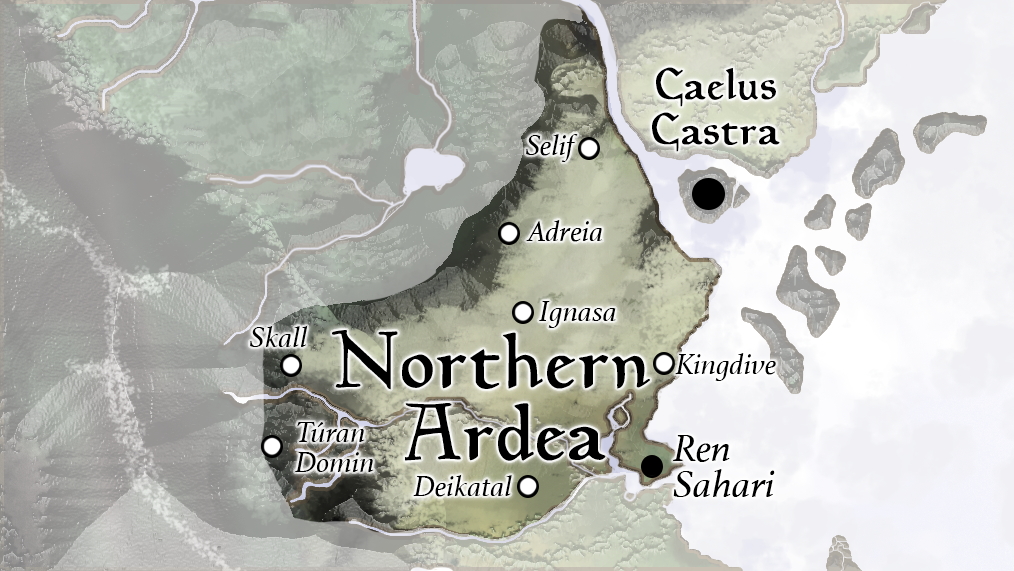
It’s believed that anything that has been lost can be found somewhere just beyond the blinding dust storms of the Ardean Desert. Below the steep cliffs of Waefolk’s southern border, the Wandering Sands stir.
At the end of Cataclysm, much of the natural world calmed, but sandstorms continue to plague Northern Ardea, making the desert extremely challenging to traverse for those unfamiliar with the terrain.
While most prefer to live in the grassy plains to the south, the nomadic Minotaur and Thri-Kreen of the region call the desert home.
Settlements

Thri-Kreen Territories
The Thri-Kreen settlements of the Ardean Desert is far removed from the cities and communities of other peoples, and despite being one of the oldest peoples of the Augural Strand, they’re among the most poorly understood. To outsiders, their speech and body language are often impenetrably difficult to interpret.
Deikatal, to the south, is known as the Hive of Thri-Kreen. It is nearly as difficult to find the entrances to the hive as it is to navigate the labyrinthine halls within. Defended by hardened sand walls, Deikatal serves as the heart of the once-widespread Ardean Empire.

The Desert Monasteries
The monks of the Monastery of Adreia are infamous as the Augural Strand’s deadliest fighters. Some eye the monks with suspicion, distrusting of their motives. Others, however, consider their prowess and discretion priceless and are willing to journey through the storms to the cliffside monastery in search of their aide.
Intended as a tomb of knowledge, it’s no secret that the Monastery of Ignasa is shielded by a magical veil that gently guides travelers and storms away from its grounds. Founded by a clan of Leonin clerics after the Cataclysm, the order seeks to preserve knowledge lest another great tragedy befall the region. The monastery’s most prized item, the Ignasa Codex, is an incomplete collection of first-person accounts outlining the 10,000 years of the Cataclysm, the only known historical records to survive the era.

Ren Sahari
The city of Ren Sahari is known as the greatest market of the Augural Strand. From rare treasures unearthed from the desert or mysterious relics from faraway lands, the market is filled with objects that cannot be found anywhere else.
At the southernmost tip of the peninsula stands the Great Palace, home of Northern Ardea’s head of state, Kana Alma Almuth, a figure believed to be the single wealthiest person in the Augural Strand.
Skall

The city of Skall was built within a deep cavern carved into the side of the Graveyard of the Tectonics. Populated almost entirely by Goblins and Hobgoblins, the city has become a sort of den for the downtrodden and derelict. While Ren Sahari holds a reputation as the greatest market, Skall, in turn, holds a reputation as the greatest black market.
Túran Domin

Túran Domin is one of two mountainside Dwarven settlements along the Mountain Barrows. The city is known for its breathtaking view of the strand from a nearly 4,000-foot elevation. While the city is open to anyone, city leaders describe Túran Domin and its sister city of Túran Farrig as “heritage cities,” meaning that there are older, historic districts accessible only to Dwarves and Rock Gnomes.
Quickthorne
The Awakened Forest
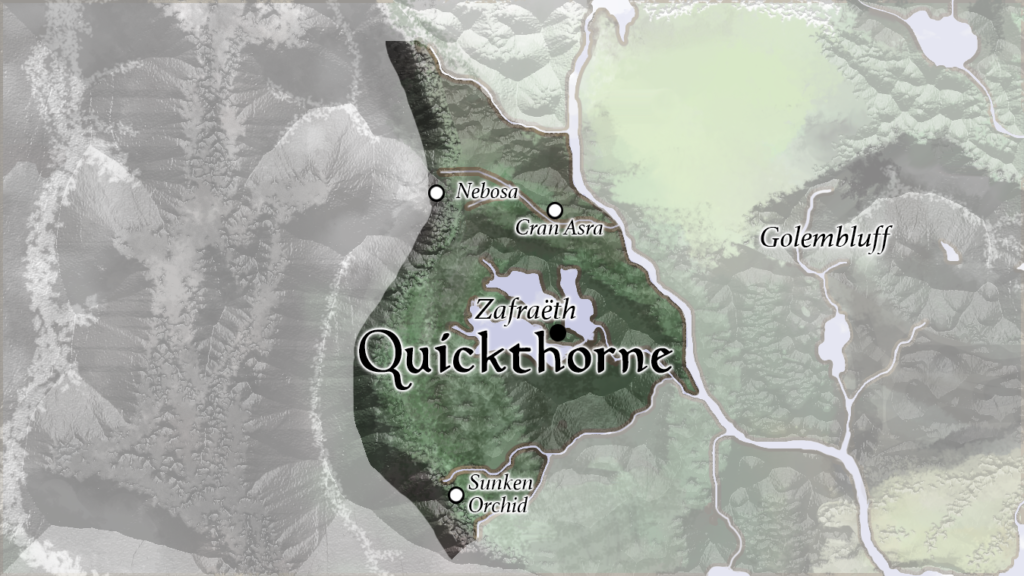
Home of the druids and birthplace of the Okita, Quickthorne has become a refuge for the strange and otherworldly of the Augural Strand. It’s said that even non-casters can feel the primal magic pulsing through the northern reaches of the Misomere Forest.
In the rush to rebuild after the Cataclysm, lumberers rushed to the forest to collect timber to build homes, and traders turned to the beasts of the forest for leather and pelts. As more and more people pillaged the forest for resources, the druids found themselves overwhelmed. In order to protect the forest, they determined that they would need to enable the forest to protect itself. The druids used magic to grant the animals greater intelligence and wisdom and taught them spells and combat so that they could defend their homes. The Okita, as they called themselves, were able to push back the developers, and, as generations went on, the Awakened Animals have established towns and cities of their own.
Communities
Cran Asra

Cran Asra is not the name of a town, but of the land itself. Legend claims that, during the Cataclysm, all of the Tectonics were in chaos — all but one. The Tectonic Cran Asra protected the creatures of the forest. Now, they seek to return the favor. It’s believed that the Firbolg have called this area home since the dawn of their species.
The Monastery of the Sunken Orchid

Small communities of Okita and Elves sit on the outskirts of the Monastery of the Sunken Orchid, hopeful that if disaster were to strike the secretive Kalashtar of the temple would protect them. The monastery’s caretakers, known to be kind and patient, rarely visit the towns except to trade their exquisitely-made armors and strange enchanted items for food and other necessities.
Nebosa

High up on the mountainside are the Ruins of Nebosa, an ancient draconic city predating the Cataclysm. While the once monumental structures have long decayed, a strange power can still be felt at this site. Stories say that Dragonborn and Kobold who have lost their way may feel the ruins calling for them to return to these ancestral grounds.
Zafraëth

Located between the three lakes at the heart of Quickthorne, the city of Zafraëth stands, built not on top of the land, but with it. Bridges and homes merge seamlessly with the trees and stones of the forest. The city is home to Elves, Centaurs, Satyrs and Okita, but outsiders know little more than that. Zafraëth has earned a reputation as a mysterious and dangerous place.
Rotkrater
The Gambler’s Wastes
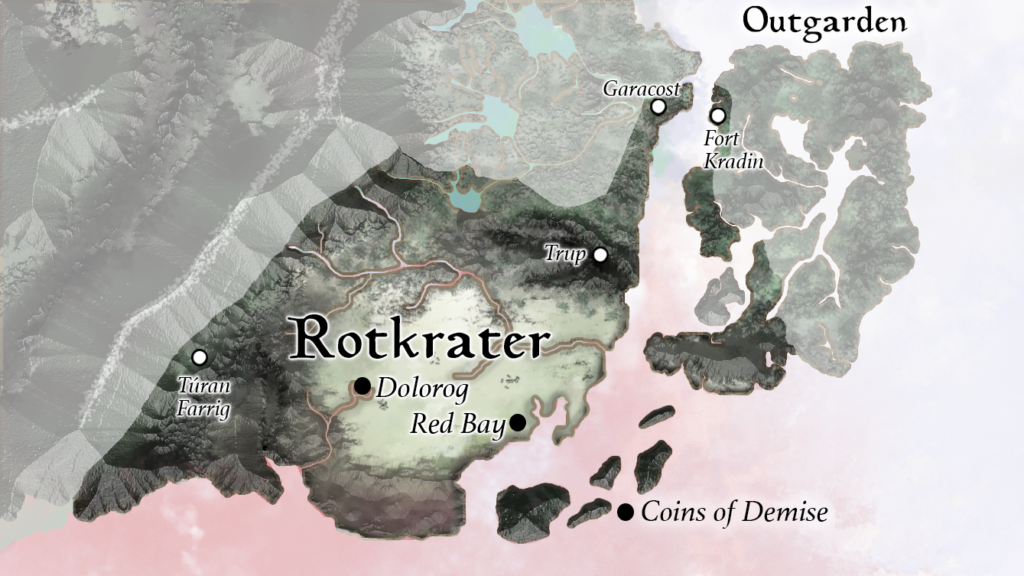
It’s believed that Rotkrater was once a jungle, but now little can survive on its reddened shores and arid flats. Those who can are not to be trifled with.
Rotkrater’s deathly conditions are considered a plague, clawing its way north. It is because of this that the people of Rotkrater rely on the fresh water and food brought in from beyond its shores. Yet, due to this desperation, pirates flock to the Rotkrater, looking to quickly fence stolen goods.
It has become a safe haven to those who find themselves unwelcome elsewhere.
Territories
Coins of Demise

Off the southeastern coast of Rotkrater runs an archipelago known as the Coins of Demise. These tropical, volcanic islands have been dormant for longer than anyone can remember, and so some have begun to build their homes here. While the red waters stain the beaches, greenery is still able to grow at the heart of the islands. Though more and more begins to wither each year.
The name of this archipelgo stems from legend. The story goes, long ago, a pirate stole from the treasure trove of Demise, the god of the watery grave. The pirate managed to escape the afterlife by riding a Leviathan through the Confluence of Worlds. At the last moment, Demise caught the pirate by the leg and dragged him back down into the endless sea, but a few coins slipped from their grasp. These coins rose to the surface of the ocean in our world and formed these islands.
Dolorog

According to Orcish legend, the Orcs journeyed to the Old World from the Shadowfell, a plane of violence and war, and founded Dolorog as the last bastion of the Orcish people. The heavily fortified walls protect the city from those who might wish them gone. Many within its walls fiercely that the Orcish people must remain united and separate from the rest of the world. Those who challenge that view are exiled.
Outer Wastes
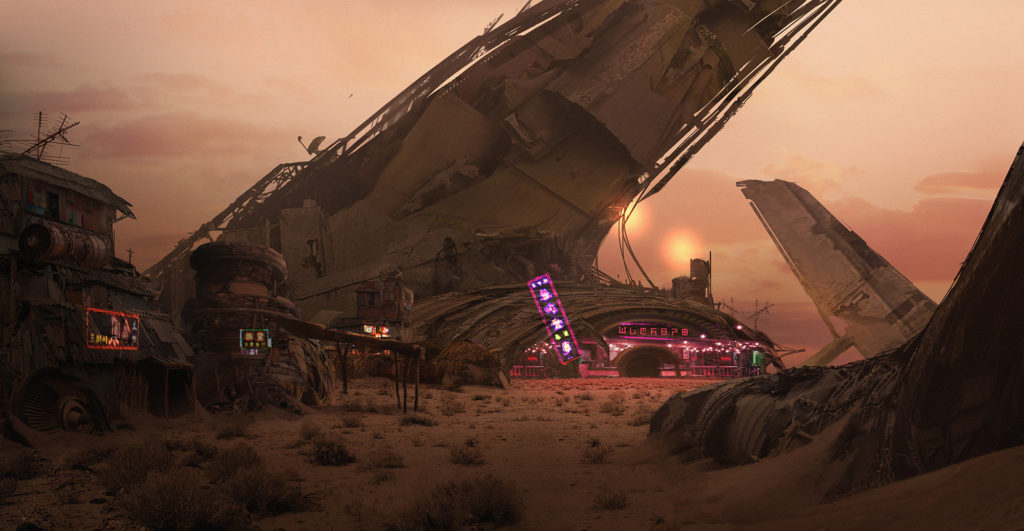
Beyond the major cities of Rotkrater, there is only desolation. Gnolls, Kenku, Yuan-ti, Orcs in exile, those that live in the bleak wilds roam in herds. Some wastelanders build makeshift shelters out of scrap metal found in the expanse, but, at any time, the ground may crumble and swallow the settlement whole. It’s unwise to stay still for long. And if you dare hunt the creatures that live in the wilds, whatsoever you choose to hunt is just as likely hunting you.
Red Bay
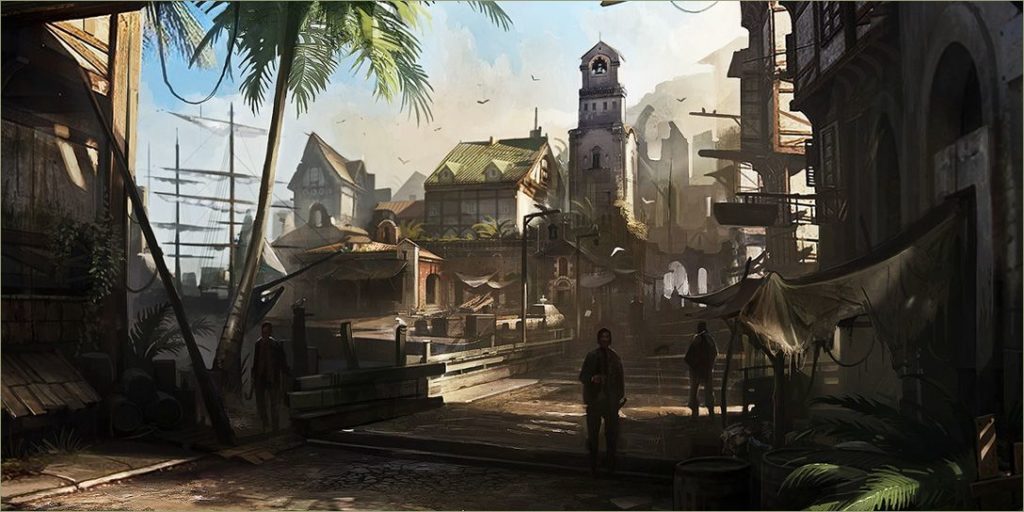
Situated along the southern bank of the nation, Red Bay is a raucous city of thieves and pariahs. It serves as the capital of the nation and is considered the most popular marketplace south of Ren Sahari.
As the capital of Rotkrater, Red Bay is the legislative heart of the nation. There is no singular ruler. Instead, laws are amended, repealed and created through a complicated game known as Regency. The laws of the land are manifested in gambling chips. Whomsoever controls one of these chips decides the law it will represent and, in turn, the punishment for infractions.
The Colonies

As desperation in Rotkrater grows, so too does the need for fast shipments. Yet the people of Sen Miëgog have been unwilling to cede passage through Gardener’s Sound, the strait which separates Sen Miëgog and Outgarden. To clear the way, the sailors of Rotkrater began claiming colonies along Sen Miëgog’s shores.
The colonizers have overtaken the Grung town of Garacost on the eastern coast of Sen Miëgog. And on the western coast of Outgarden, they’ve built Fort Kradin. The colonizers have neared a complete seizure of the strait, but they have had little luck taking Pantano, the expansive, amphibious city on the northern lip of the passage.
The Fissure

The hobgoblins and bugbears of Rotkrater have staked a claim on the northern ravine. The Fissure, as it’s known, is home to the city of Trup, built within the skeleton of a long-dead leviathan at the lowest point of the ravine. Trespassers in the Fissure are often met with violence in defense of the delicate network of aqueducts that run throughout the Fissure.
Túran Farrig

High up the mountain side along the Graveyard of the Tectonics stands Túran Farrig, the southern tower and counterpart to Northern Ardea’s Túran Domin. Few know what the inside of the towers look like save for the dwarves and rock gnomes that call them home.
Sen Miëgog
The Hallowed Swamp

The mainlanders call it holy ground, seeing themselves as caretakers of a restless and temperamental land. But, for travelers, the Hallowed Swamp can be a treacherous place.
In the past, the Firstfolk of Sen Miëgog controlled all of the swamp, including the jungle island of Outgarden. Over time, however, the neighboring regions have eaten away at its borders.
Generally speaking, the pious natives of the mainland and Outgarden seek to avoid war, though there are more ruthless factions and creatures that consider mercy a weakness and will not watch their home be stolen.
Sanctuaries
Akakouko

Aligned with neither the Yuan-Ti of Outgarden nor the colonizers from Rotkrater, the Aarakocra of Anakouko are a faction of their own. Extraordinarily beautiful, the Anakoukoans are merciless fighters and adhere to a strict training regiment. They are considered some of the most elite fighters the world over. Those who cannot keep up are cast out to make lives for themselves elsewhere. Visitors are unwelcome.
Araneae

Few dare venture to where Sen Miëgog’s foggy waters are deepest. Steam drifts along the water’s surface, concealing those who watch from below.
Outgarden

To much of the Augural Strand, the island is known as Outgarden, but, to the Yuan-Ti, it is “Abalo.” Outsiders, even Sen Miëgog’s mainlanders, are unwelcome. Many Yuan-Ti consider the island a promised land of sorts, and even those who go on to live in cities hundreds of miles beyond the island’s shores can still hear the faint ethereal whisper of their homeland.
Pantano

Pantano may be easy to find on a map — right on the northern lip of Gardener’s Sound — but, on foot, it can be nearly impossible to locate. The city is surrounded by miles of dark swampland. The city itself, however, could not be more vibrant. Colorful banners fly outside shops, and the music of street bards fills the streets. Pantano’s cuisine is far more complex than most settlements in the nation, though it still primarily consists of large insects.
The city and its surrounding waters are regarded as perhaps the most sacred site in Sen Miëgog. Long ago, the ancestors of many Tortle and Grung mainlanders landed on the shore of what is now Pantano after fleeing the predatorial jungle. For centuries, elders have piloted ferries to and from Outgarden as a rite of passage. This homecoming pilgrimage serves as a reminder of the hardships their ancestors faced and the bounty that “the Hallowed Swamp” provides.
Shelter

It’s unclear exactly where the Kenku originated, but Shelter has become one of few places they are welcome. No more than a collection of hovels in southern Sen Miëgog, Shelter is meant as a home of refuge. Other wandering souls may find rest in their encampments, but some claim that isolation has made them — for lack of a better word — somewhat strange.
Sogworn Wood
The Frozen Wilds
It’s best not to think about what lies beyond the Sogworn Wall. Yet, if you must know, know this: These woods are not meant for good-natured folk.
As the people of Ampere forged their new nation, stories began to surface. Crackling voices from the forest. Livestock, vanishing, and, soon, people as well. Scouts ventured out and seldom returned. Those who did returned rambling about strange sights and impossible magics, corruptions of the mind.
Day by day it seemed the forest grew, spreading like blood through white linen. So they built the wall, a shield from the monsters beyond.
Still, the stories circle. Shadows, weaving through the bricks, and stray sounds, words almost, from far away.
You hope they’re only tricks of the mind.
Yet that comfort may itself be a horror of its own.
Southern Ardea
The Lush Cape

Roads, homes, markets and even skyscrapers stand among the untamed trees and grasses of Southern Ardea. Whether out of a desire to live in tandem with the natural world or failure to conquer it, this nation has learned to cooperate with countless species of flora and fauna that call this land their home. It’s not uncommon to see rush hour traffic impeded by migrating rothé or to find apes climbing through an open unattended window.
Amidst all this life, there are some who see it all as a means for profit. While poaching wildlife and exploiting the land for resources are both forbidden, traders have found ways to go undetected—and so too have those who hunt them in return.
Outposts
Baalwa
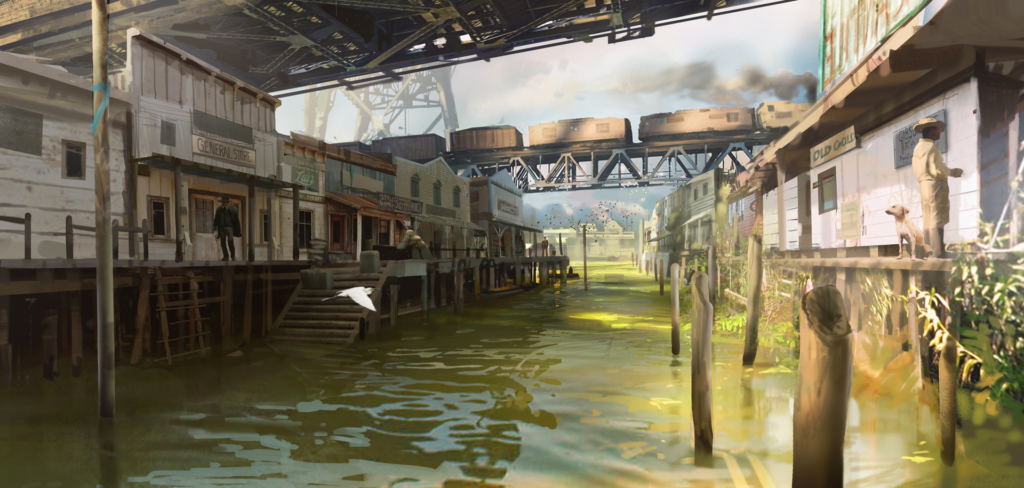
Once the southernmost point of the Thri-Kreen hunting grounds, traders quickly swept in once valuable minerals were discovered just under the surface of the wetlands. Baalwa continues to be a popular site of laborers looking for work, so long as they can stand the stink of mildew.
Cape Remara

The seat of Southern Ardea’s monarchy, Cape Remara is an astoundingly wealthy city. While the royal family enjoys the greatest of Remara’s luxuries, this wealth is not restricted only to the upper echelons of society. The average residents of Cape Remara have access to quality education, fine food and drink and the region’s most extensive museum collection, the famous August Treasury.
Dodano
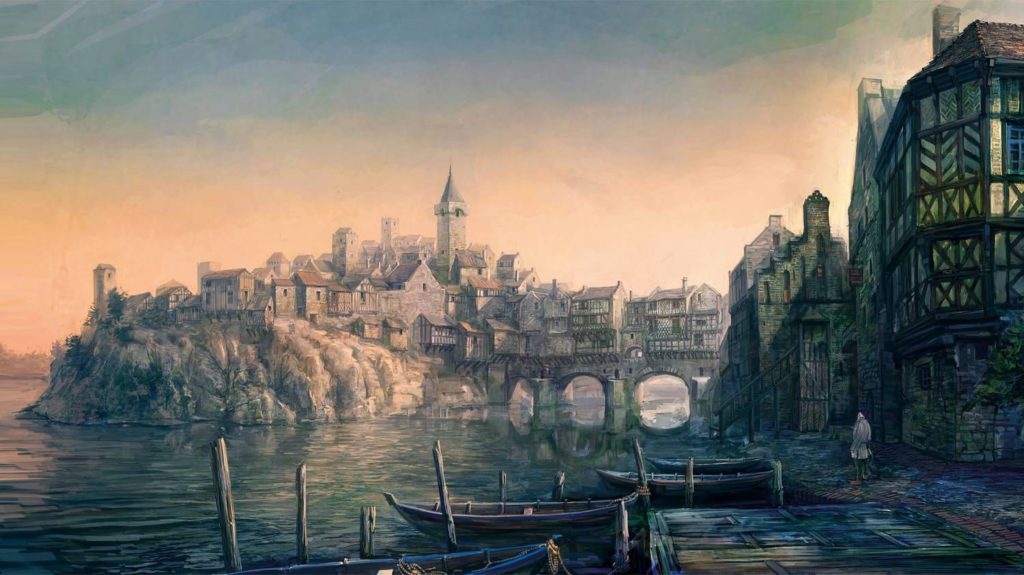
While most Aarakocran settlements lie in high, hard-to-reach places, Dodano sits comfortably at the edge of Lake Waha. The Dodano Aarakocra share little in common with the rest of their species. For one, most are incapable of flight making the easily accessible lakeside town perfect for them. It also makes them well-situated for trade. Dodano is the most developed of the Aarakocran settlements.
Isle of Nexus

The Isle of Nexus had been abandoned long before industrialists swept in hoping to pillage the wetlands for valuable resources. Most crews never make it back and those that do return empty-handed. The Firstfolk call the Isle of Nexus “Enkéta,” a word which to them means “restless.” They believe the island is the place where our world connects with the worlds of life and of death, not as a bridge but as a sinkhole where the many dimensions collapse into one.
Hundelok
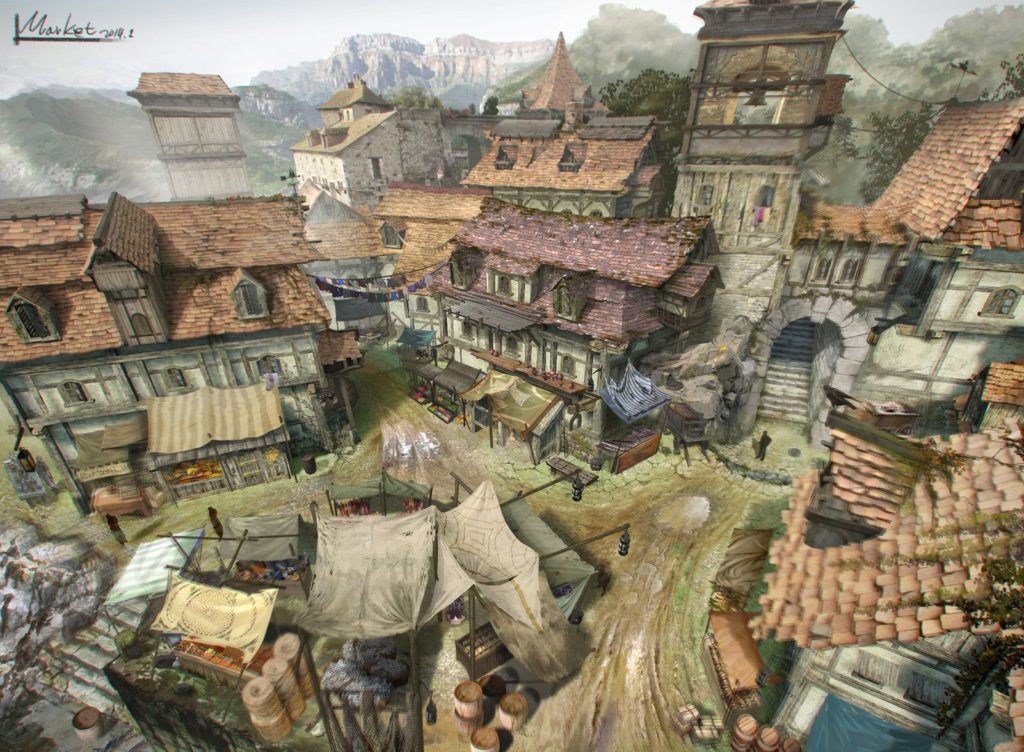
Hundelok is among the most welcoming communities in Southern Ardea, but it’s hardly a popular tourist destination. Few beyond the Gnolls can stomach the pungent smell of aging raw meats that permeates the ramshackle town. The Gnolls, however, consider the town to be home to the greatest cuisine in the Strand.
Kitmisto
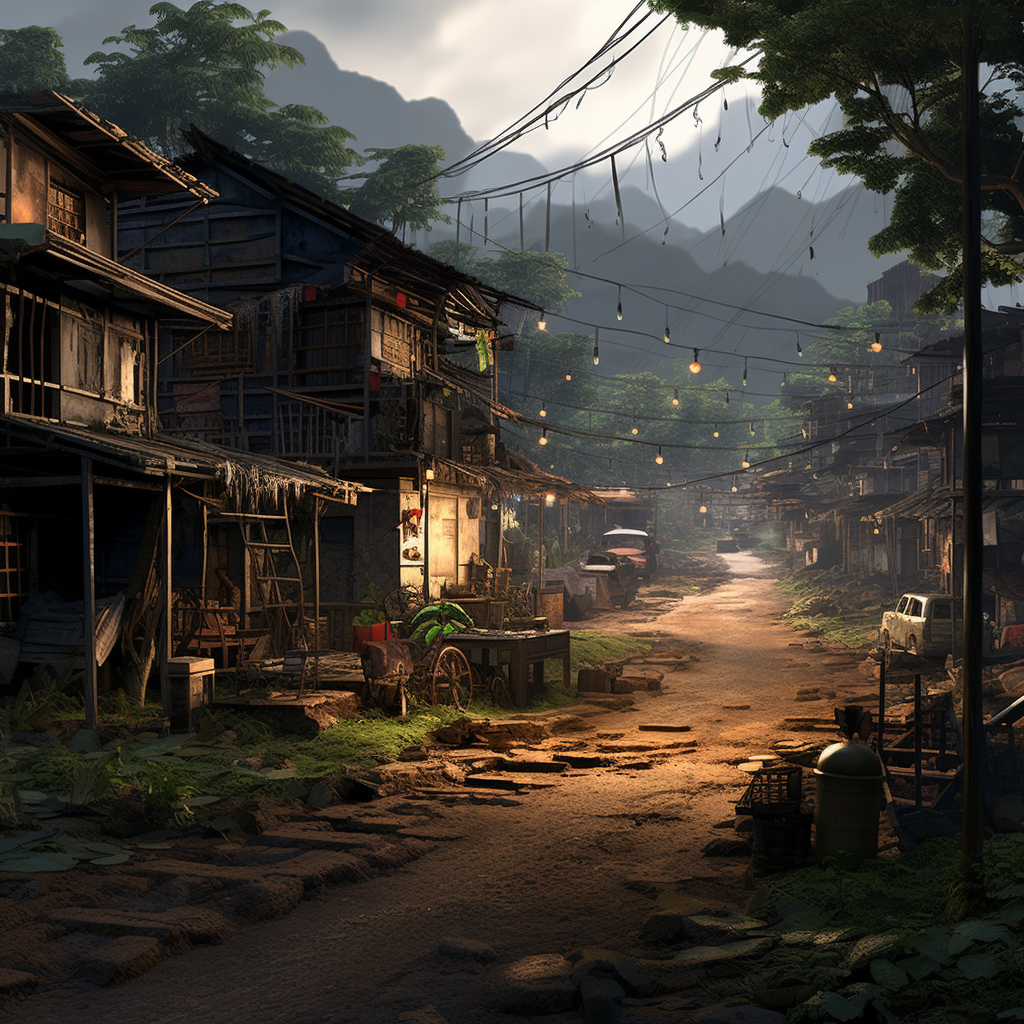
Surrounded by untamed wilderness, Kitmisto is a sprawling collection of homes, workshops and warehouses. Accessed primarily by a single railroad that cuts through the dense jungle, the town finds itself at an uneasy crossroads between its agricultural roots and modern machinery. Despite its struggles, Kitmisto is famed for its vibrant bustling marketplaces where locals trade goods ranging from handcrafted textiles to musical instruments and more.
Taparoco
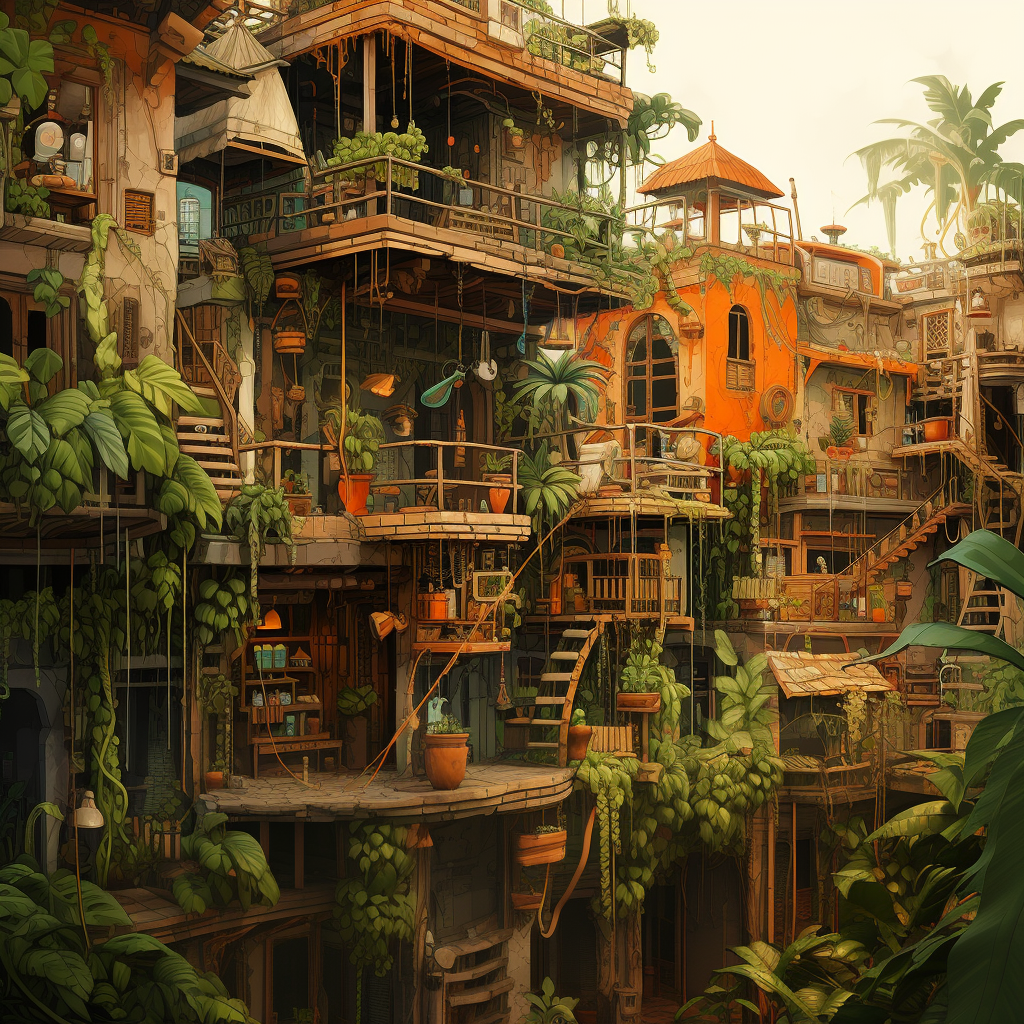
Nestled on the edge of Southern Ardea’s lush jungle peninsula, Taparoco is a vibrant town teeming with life and color. Known as the “Jungle Gem,” it is a haven where the wilderness meets whimsy. The town’s architecture is a harmonious blend of nature and artistry; buildings are crafted from locally sourced woods and adorned with vibrant murals depicting scenes of the surrounding jungle and its mystical creatures. Thatch-roofed huts and treehouse lodgings provide unique accommodations for tourists.
Waefolk
The Sylvan Boroughs
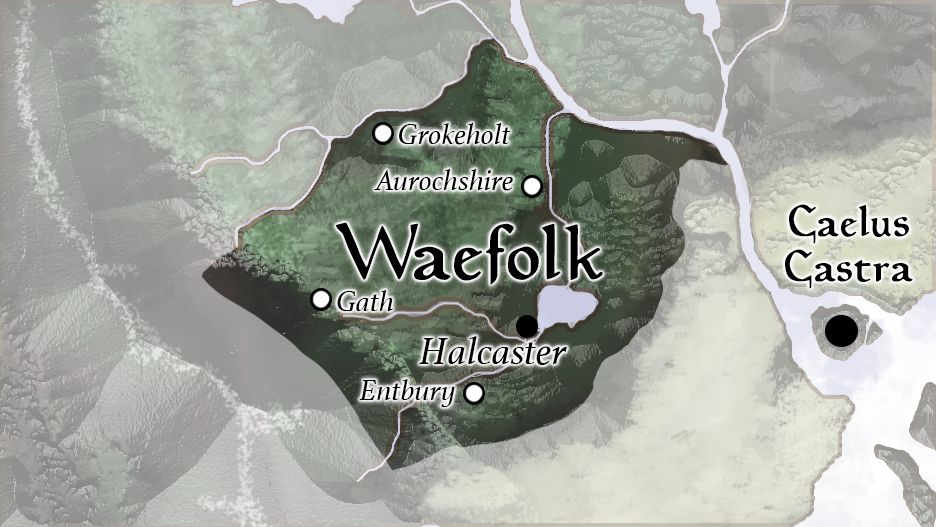
Unlike the untamed wilds in Quickthorne to the north, Waefolk is a nation of cobblestone paths, fine clothing and horse-drawn carriages. The region is caught between the strange magics of the Misomere Forest—the woods that encompass both Waefolk and Quickthorne—and the development of modern society.
Railroad tracks link many of Waefolk’s towns and cities, but artifice and advanced technology draw suspicion and untrusting glances.
Superstition and whispers of curses are common throughout the nation with many fearing the influence of the nation’s neighboring fae.
Towns & Villages
Aurochshire

Upriver of Halcaster, Aurochshire is a town long divided by the University of Aurochshire and the Church of Genesis. The university trades in philosophy, poetry and politics, while the church peddles the gospel, scripture and doctrine. Both have been fiercely at odds since the founding of the town, but some would say they are more alike than they are different.
Entbury

A short distance downriver from Halcaster is Entbury, a beautiful town and home of the world-renowned Southern Waefolk Music School. The town is protected by magical wards to defend from the “black magics” that reside just outside its borders.
Gath

From below, Gath looks to be as welcoming as any other town, but, to the Goliaths who call it home, it is a precious hideaway from the world beyond. Meant to preserve an ancient way of life, the town of Gath is both simple in its sophistication and well-defended by its powerful populace.
Grokeholt

Among the Okita, there are those who prefer to live as their wild cousins do. Then there’s Grokeholt. It’s not quite civilized society, but it’s not quite untamed either. The Okita of Grokeholt have built their town out of found objects, and more often than not those objects are misused. For example, it’s not uncommon to see villagers drinking from watering cans or using wheelbarrows as chairs.
Halcaster

The city of Halcaster is plagued by misfortune, though city officials balk at any mention of the alleged “curse.” The story goes that Waefolk was once a part of Quickthorne, yet as the people of the city began welcoming in industry and development, the nearby druids became angry and placed a curse over the capital. No spellcaster has been able to find any evidence of a curse, but strange happenings are very common in the shady streets of Halcaster.
